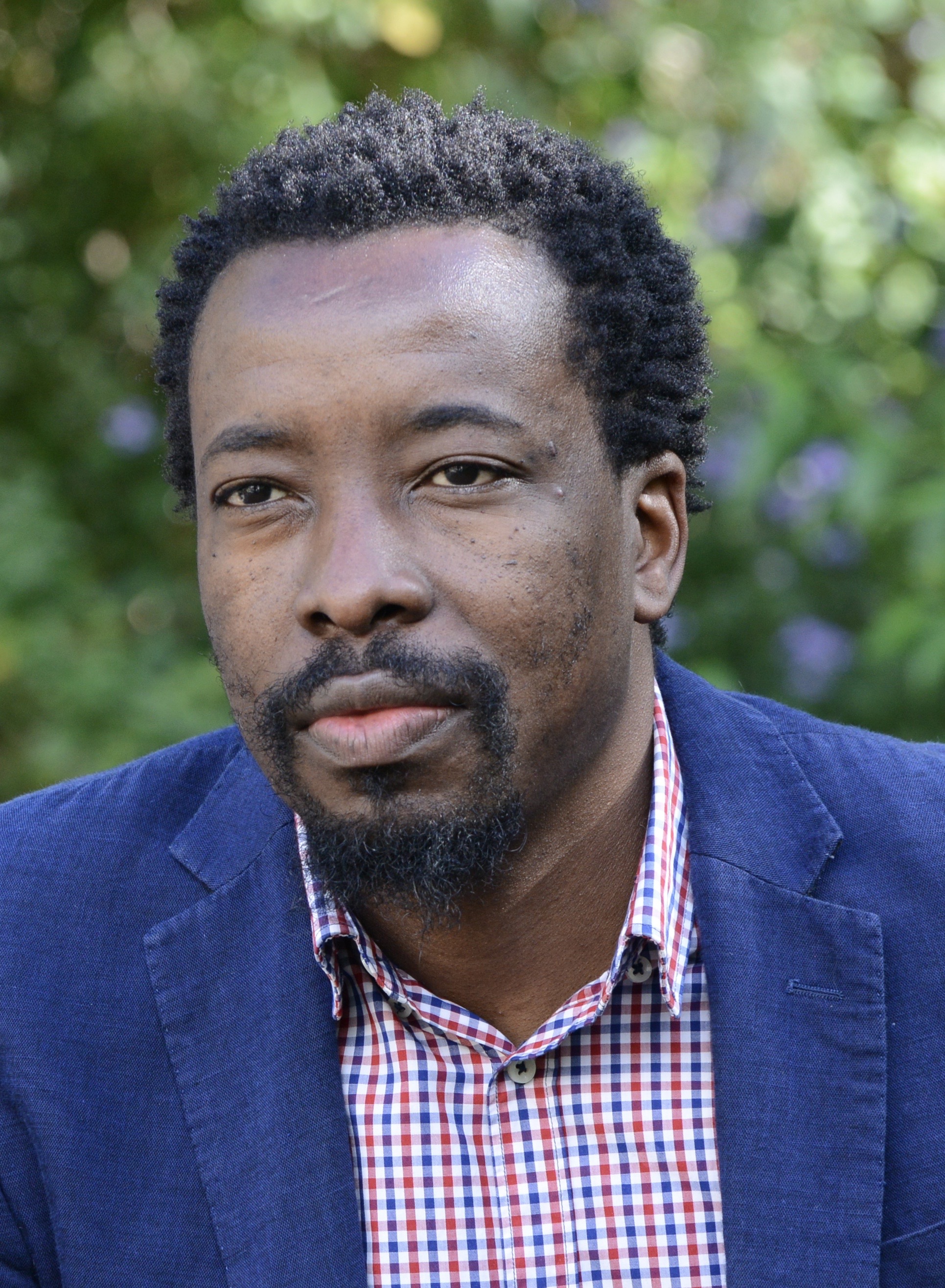‘Chambia’ and the ‘Black Mountain’ exhibition by Stary Mwaba | South Africa and Zambia
An artist currently in Lusaka offers her impressions of Zambian art and artists, highlighting the work of Stary Mwaba, as an example of a non-traditional artist who is “breaking the mold”. In the 'Black Mountain' show, Mwaba explores complex stories of individuals that interact with places marked by a strong Chinese presence in Zambian mines and infrastructures.
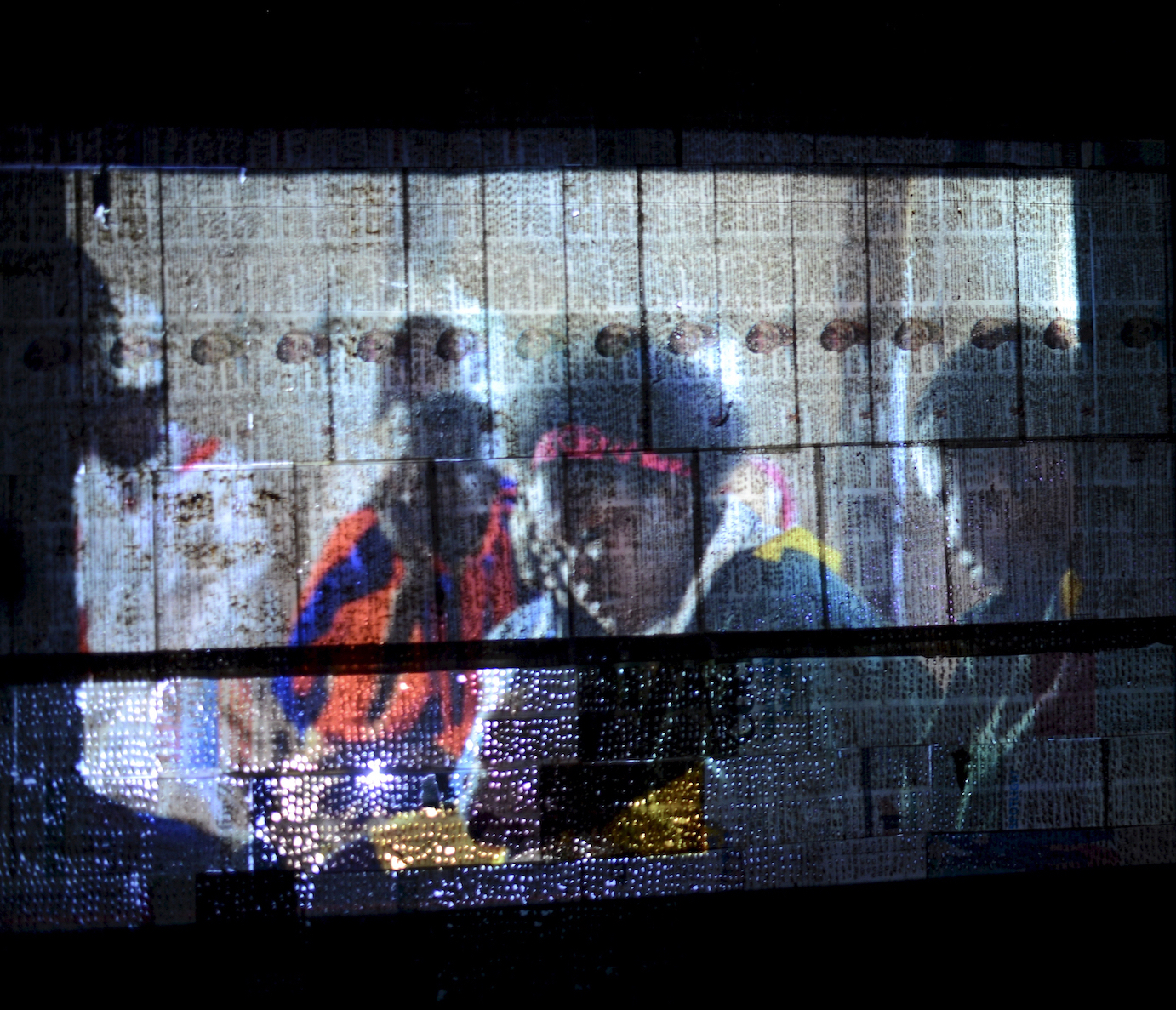
The visual art sector in Zambia largely consists of two art genres which are painting and sculpture. In the midst of an industry dominated by traditional modes of art making, is a category of artists that are pushing boundaries and redefining artistic practices in their own ways and terms. By traditional modes of art making, I am referring to painting with oil, water and acrylic, and sculpting with marble, stone, wood and other mediums. Although I use the word traditional to point to materials used in production, for the case of a majority of artworks in Zambia this could also implicitly point to the fact that most of the subject matter is drawn from practices and activities of local linguistic and social-cultural groupings, conventionally referred to as "tradition" or "culture" within the country. Stary Mwaba is an example of an artist who is breaking this traditional norm by going against the grain and interestingly subverting modes of artistic production in Zambia.
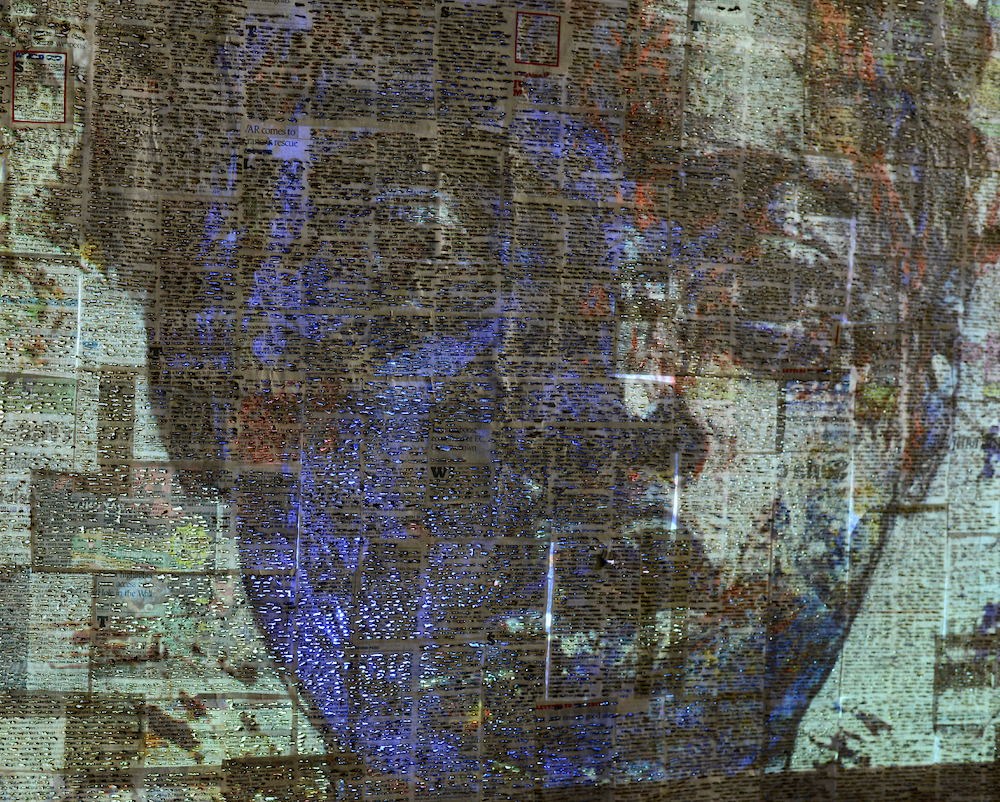
I saw his 2019 MFA exhibition entitled "Black Mountain" at Rhodes University Gallery, Makhanda, South Africa.
In this exhibition, Mwaba uses an experience he had helping his daughter to understand the process of absorption in plants as an entry point into discussing nuances and complexities in the relations and interactions of Zambian and Chinese individuals. "Black Mountain" explores stories of individuals that interact with specific localities that are somehow related to the presence of China within the landscape of Zambia. Mwaba identifies three important places: 1) the Black Mountain which is located in the Copperbelt Province and is a pile of residues from mining activities; 2) the Tanzania-Zambia Railway which is popularly known in its abbreviated form TAZARA; this rail line runs through Zambia and onto the port of Dar es Salaam in Tanzania; and 3) the Chambeshi Bridge.
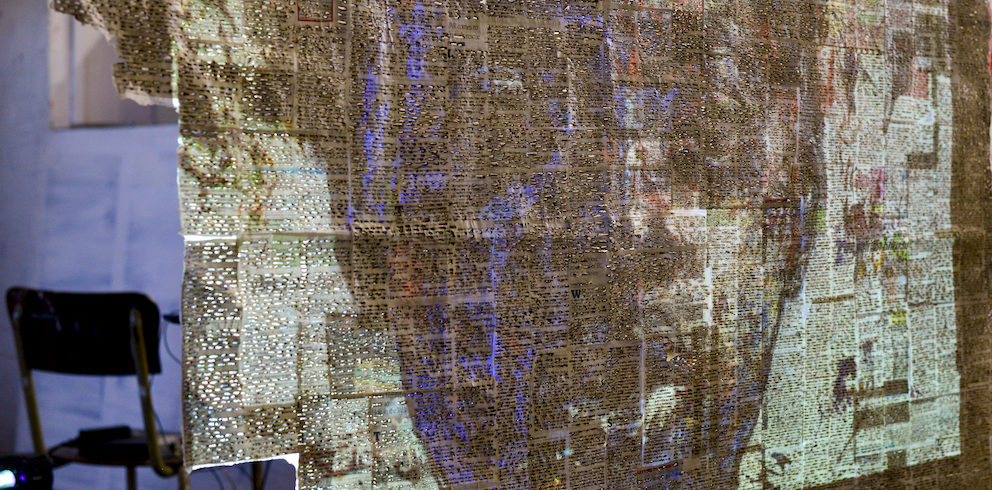
Mwaba works in various mediums that come together to paint a complex picture that bring to light personal stories and experiences of individuals who navigate these three historically significant spaces. In a subtle manner, he provides an opportunity for viewers to momentarily shift their gaze from dominant narratives about the relationship between Africa and China, that are often driven by large media houses, to focus on what he refers to as small narratives.
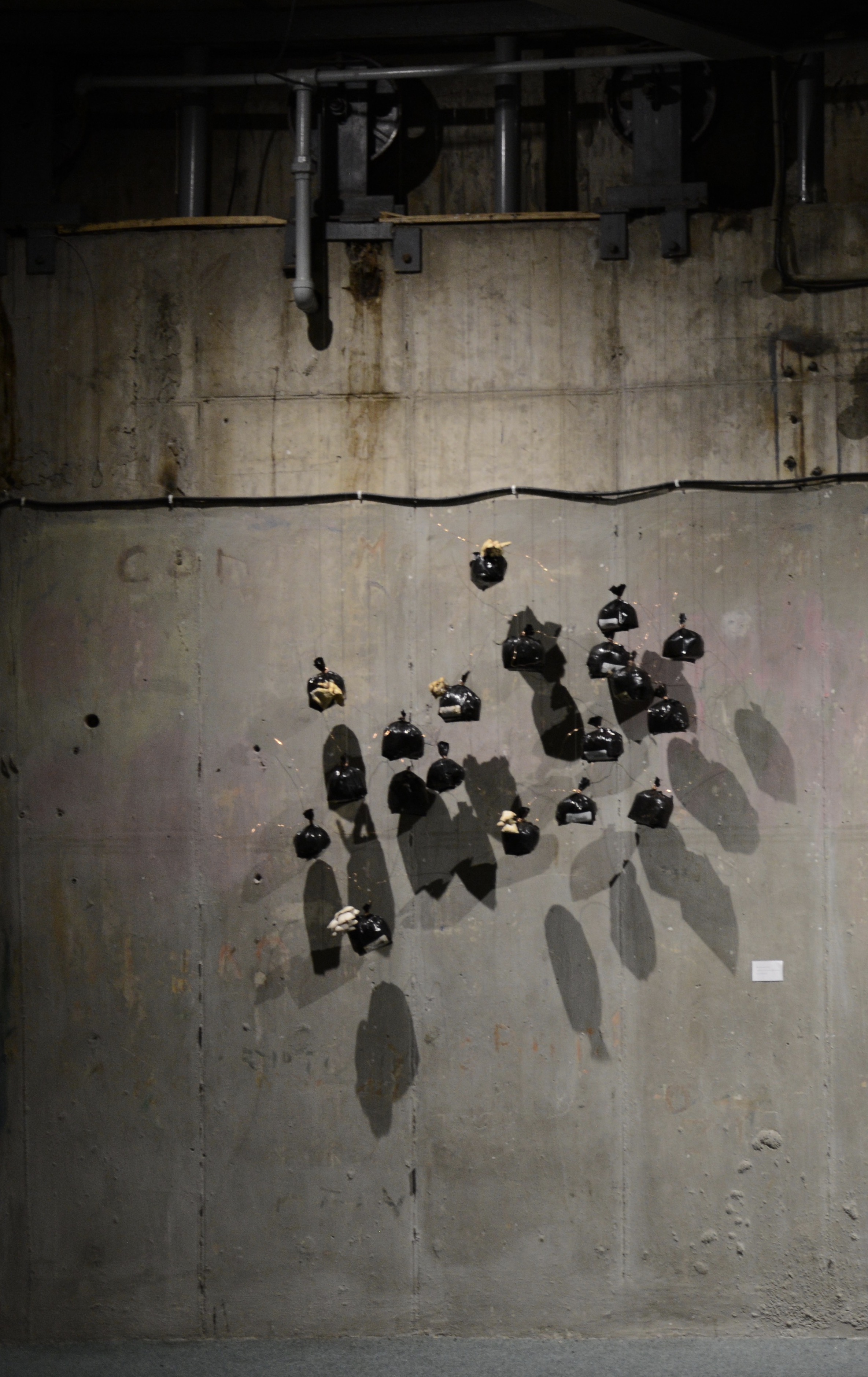
The work that I would say really points to the idea of diverging from larger narratives to small narratives is "Chambia" (2018). Chambia is a colloquial word that combines the words ‘China’ and ‘Zambia’ and has locally been used to infer derogatory insinuations that Zambia has become a colonial state of China. The artwork "Chambia", installed in one of the smaller rooms of the gallery, is comprised of images of people that were taken aboard a train along the TAZARA and then projected onto a large newspaper that was made by stitching together many newspaper pages. On closer observation, one is able to see that Mwaba not only combines the newspapers, but also goes through a laborious process of erasing parts of the words in the newspapers by making holes that appear like the edges of partially burnt paper. The juxtaposition of the images of individuals, who have personal interactions with this rail line, onto widely circulated newspapers is a powerful visual. Noteworthy that because of the low lighting in the gallery space, the words that are not erased are also not easily readable, while the pictures are illuminated so that they become more visible than the newspapers.
Another work that stood out, particularly to me, was "Black Mountain Born Again". It consisted of pieces of black plastic bags, suspended from the ceiling, with mushrooms growing out of them. The bags were hung quite close to the wall and created interesting silhouettes or shadows on the walls. The silhouettes were quite reminiscent of the Black Mountain itself.
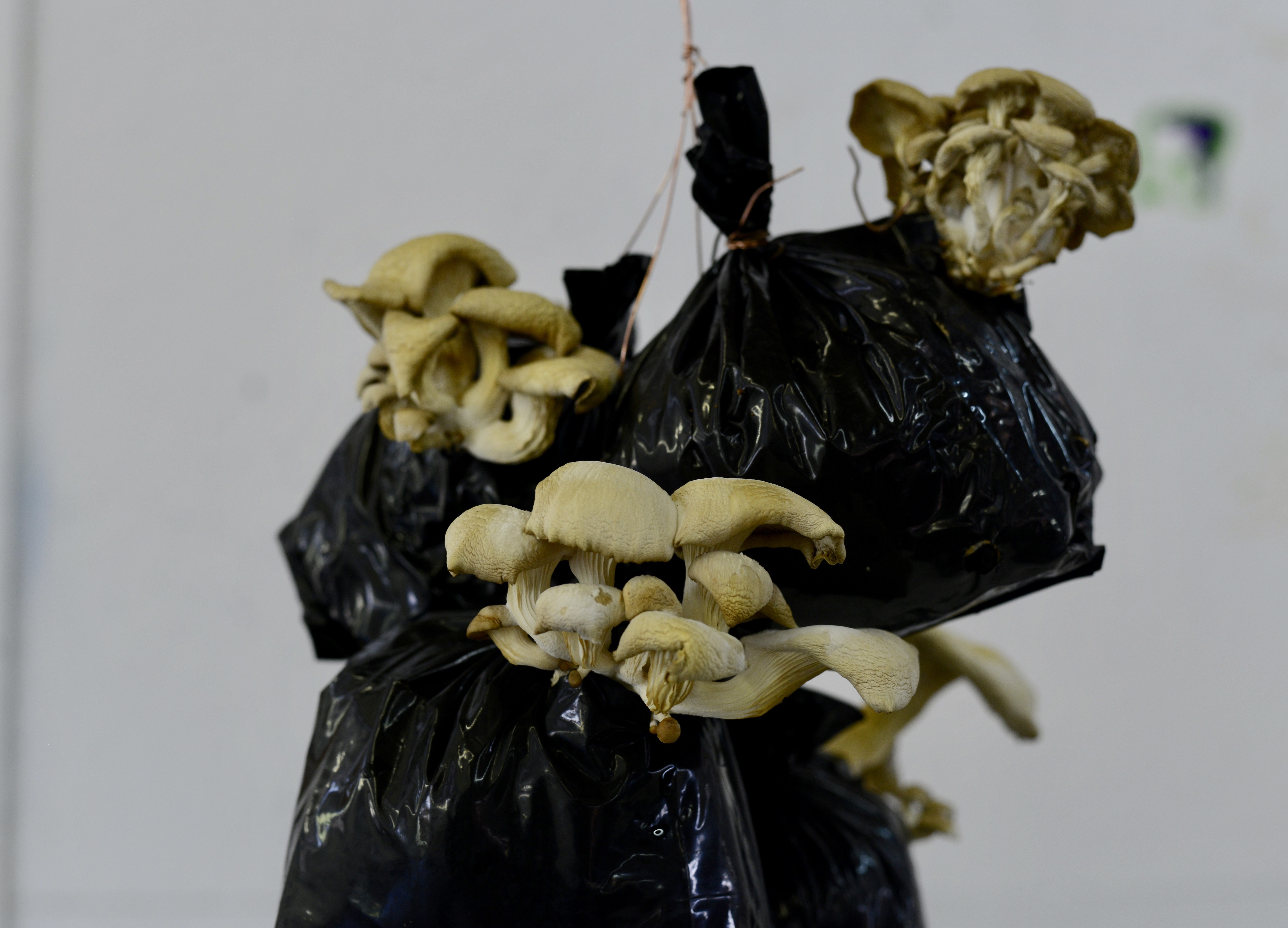
The Black Mountain consists of residuals from mines in Kitwe over a period of time and has recently become a site of illegal mining. When one views the mountain, it does literally look a mountain that is black in colour. The dirt in the black bags could arguably be likened to the black piles of land, and the mushrooms could be conceptually associated with the illegal mining activities that in turn contribute, in most cases, to the economic situation of most individuals who participate in the activity of illegal mining at the mountain.
Another outstanding work is "Black Bodies", an installation of more than twenty black and white portraits of different people with a red laser painted across the chests of their portraits. When talking about this piece Mwaba relates this work to the construction of the railway line. He mentions that the red line is created with a spirit level, a tool used to make straight lines. He adds that he was inspired by the historic fact that when the TAZARA was being constructed, the builders would ask the local Black workers to stand in a single file line, in a way creating a "human spirit level."
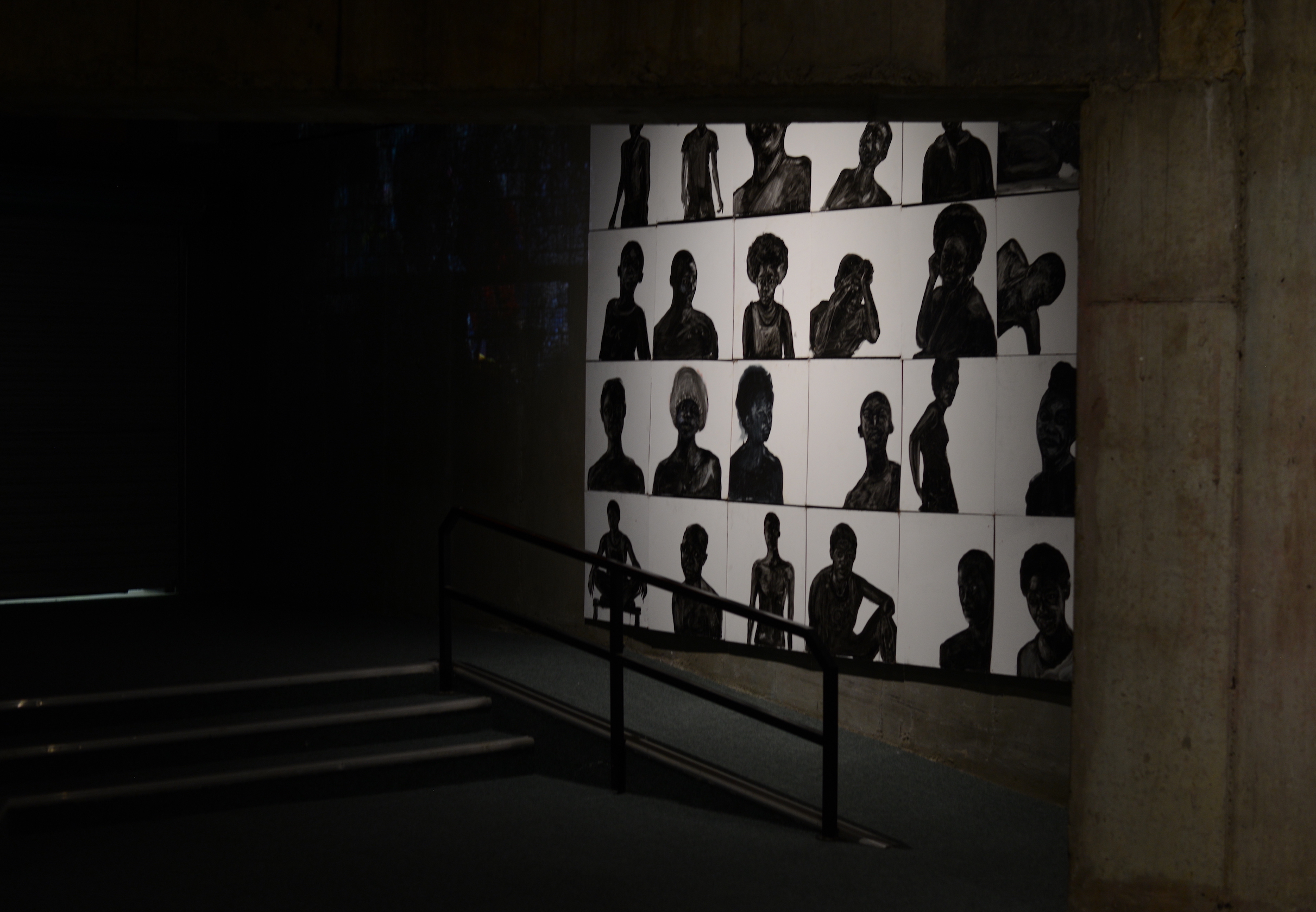
Relations and interactions of Zambia with China, or of China with Zambia are quite complex. There is a bigger and dominant narrative that generally focuses on ideas of economic colonization. Beyond this bigger narrative are smaller and complex stories that are barely ever brought to light. In saying this, the exhibition and project "Black Mountain" is quite refreshing and intriguing in the way that it is put together.
Photos of artwork from the exhibition are provided courtesy the artist, Stary Mwaba.
